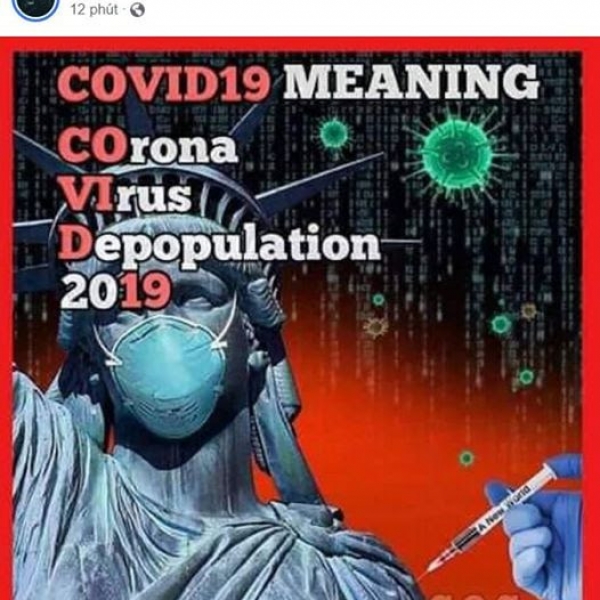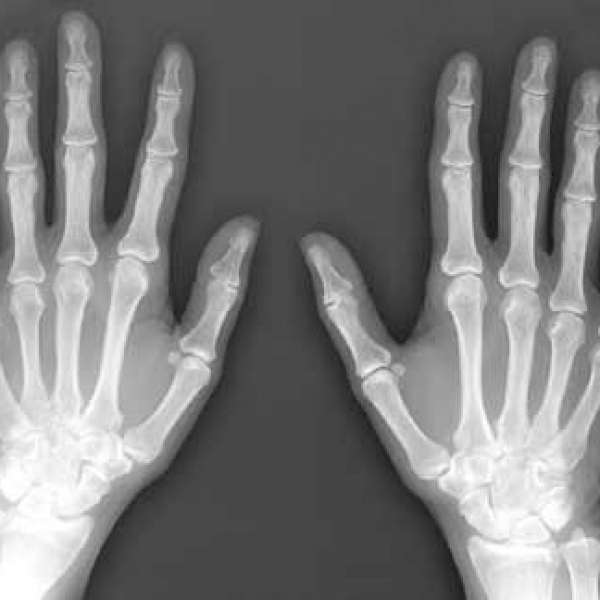Contact Admission
Who is The corona virus?
The corona virus is ‘ai’?
Nguyen Tuan
The structure of the corona bacteria consists of four proteins: nucleocapsid, envelope, membrane and spike. Nucleocapsid proteins are responsible for the formation of basic genetic material, and are ball-shaped. The appearance of the nucleocapsid is the ‘envelope’ (envelope) and membrane. And the protein ‘spike’ has the shape of a baton, and it sticks on the ‘ball’. So, looking at this virus, we see it as a circular crown. That's why people give it the somewhat regal name ‘corona’. Maybe we give it the Vietnamese name "The crown of bacteria".
The noun ‘corona’ or ‘coronavirus’ will be a familiar vocabulary from here on. But in reality, other than microbiologists, very few people know about the 'identity' of this virus. We try to study the family line of supercellular corona bacteria to know why they are so small that they can have many serious effects on humans.
Research on coronavirus is really only active after the SARS epidemic. In the past (and today), the virus that causes seasonal flu, and among hundreds of millions of people with the flu, also died. The number of people who die from seasonal flu each year in the world according to WHO is estimated at 665,000 people. But few people are interested in doing research.
But in 2002-2003, the SARS epidemic happened in China, infecting 8,096 people; of which 774 (~ 10%) died, the coronavirus was the culprit. Then (in 2012) was the MERS epidemic infecting thousands of people (mainly in Saudi Arabia); out of which 858 (35%) died, and the culprit was also the corona. Since then, science has started to pay attention to this seemingly 'harmless' virus.
The SARS and MERS epidemic is over and has left science a lot of valuable information. Such information pertains to their strains, their genetic makeup, their virulence, and the mechanism of their attack.
|
Covid-19 epidemic virus was taken with an electron microscope. The bacteria SARS-CoV-2 (yellow) next to the human cells (pink). |
Four species of coronavirus
The corona virus was first discovered in 1960 when it caused bronchitis in a chicken farm and two viruses in the nose of a cold patient. At that time, the scientific world named it ‘coronavirus 229E’ and ‘coronavirus OC43’. Later, after the SARS epidemic, scientists discovered two more species, HKU1 and NL63. (HK stands for the University of Hong Kong, where the virus was discovered.) The virus that causes SARS is called SARS-Cov, MERS is MERS-CoV, and in Covid-19 they are called SARS-Cov-2.
In terms of genre, they are classified as ‘zoonotic’. This means that they are transmitted from animals to animals, and from animals to humans. (Actually, humans are also… animals). By now, we know well that coronavirus is from bats. They have been infecting bats for a long time (hundreds of years?), But bats don't get pneumonia! The theory set out to explain this phenomenon is that the bat seems 'happy to live' with the coronavirus.
Biological structure
In biology, the corona virus is classified as ‘enveloped single-stranded RNA’. This identifier means that their genome is RNA (not DNA as some people mistakenly), and the other is that their genome 'encapsulates' in an envelope-like protein shell. It should be added that DNA has four letters A, T, G, C, while RNA has A, G, C, U (uracil). Therefore, if the DNA is AT pair, then the RNA is AU. DNA has two strands twisted together, and RNA has only 1 wire. How long is that rope? The answer is about 30,000 letters. This length is considered the longest compared to other viruses.
In addition, we know that the structure of the corona bacteria is comprised of four proteins: nucleocapsid, envelope, membrane and spike. Nucleocapsid proteins are responsible for the formation of basic genetic material, and are ball-shaped. The appearance of the nucleocapsid is the ‘envelope’ (envelope) and membrane. And the protein ‘spike’ has the shape of a baton, and it sticks on the ‘ball’. So, looking at this virus, we see it as a circular crown. That's why people give it the somewhat regal name ‘corona’. Maybe we give it the Vietnamese name "The crown of bacteria".
Why coronavirus likes to attack the lungs
The influenza virus (referred to as FluV for short) and the Covid-19 epidemic corona virus, SARS and MERS (collectively, SARS-Cov) are different. The important difference between the two viruses is that FluV infects the upper part of the respiratory system such as the nose and throat, while SARS-Cov infects the lower part (ie the lungs).
The lungs are a target that the bacterial crown is very fond of attacking. Our lungs have two groups of cells called mucus and celia. Mucus are mucous membranes that protect the lungs, while celia is shaped like a baton. Celia has the task of patrolling, checking for viruses to get rid of them. The viruses want to attack the lungs, they have to attack and destroy ‘army of celia’.
After destroying the army of celia, the virus uses the ‘door’ ACE2 to enter the lungs. The first thing after they get on target is that they replicate as much as possible. To clone, they have to use 'apparatus' RNA, and the problem comes from here. An RNA replication machine does not have a correction mechanism (like DNA), so cloning errors occur quite often. The longer the viral RNA, the more errors in replication occur. Their flaws can be devastating for people, because errors here can mean 'evolution' unforeseen, and viruses can become resistant to drugs very quickly.
After cloning is done, they start to cause trouble for the host. These include flu-like symptoms such as fever, cough, and in many cases, the patient will have difficulty breathing and pneumonia. Not only that, they can also cause harm beyond the lungs. An earlier study found that more than 90% of patients during the MERS epidemic had several other symptoms such as elevated liver enzymes, leukopenia and platelet deficiency, and decreased blood pressure. In rare cases, patients have also suffered kidney damage and heart failure.
Why do coronavirus have different virulence?
Why is the virulence of corona virus different between 3 epidemics? Incomplete data show that this Covid-19 translated corona virus (SARS-Cov-2) had a mortality rate of only 2%, compared with 10% in SARS and 35% in MERS. No one has a definitive answer, but most likely they use different receptors.
Covid-19 and SARS use the ACE2 receptor, while the MERS virus uses the DPP4 receptor. Although both ACE2 receptors and DPP4 receptors are found in lung cells and several other organs, the DPP4 receptor is active in the lower bronchus. The distribution of these receptors in tissues and organs may be a factor in why some viruses such as MERS are more toxic than Covid-19.
It is a mystery why the corona virus does not attack the heart. The ACE2 receptor is present in the heart, but it seems that the coronavirus is not interested in… the heart. They infect only the lungs (and respiratory system in general). They go in and out of our throats like ... shopping. It is possible that other receptors interact with ACE2 to target an attack. We still don't know what other receptors are. It is also possible that the environment in the heart is too toxic to the coronavirus, so they dare not 'dodge' to go there?
Coronaviruses are not new bacteria, but they transform into many new strains and cause epidemics around the world. However, because scientists still don't know much about the new virus (such as the mechanism of transmission), the public - especially the 'worried well' - is confused and noisy. But we have reason to be optimistic that science will give us many answers in the near future - very near.
Even though we don't have a specific vaccine, we have 'lived together' forever with 4 strains of coronavirus (OC43, 229E, HKU1 and NL63). And, we didn't wear a mask against those viruses. It is very likely that in the future, our immune system will adjust (adapt) again so that we have to live with the fifth member of the coronavirus family, SARS-Cov-2.
Nguyen Tuan
Other news
- May 19 morning: Vietnam has 31 new COVID-19 cases, the Ministry of Health consults with a 'record' of 20 severe cases ( 08:51 - 19/05/2021 )
- May 06, an additional 8 cases COVID-19 at the Tropical Disease Hospital Central ( 10:10 - 06/05/2021 )
- This morning 5-5, Vietnam has no new cases of COVID-19, more than 602,000 more globally ( 14:29 - 05/05/2021 )
- On the morning of May 3, Vietnam did not record a new case of Covid-19 infection ( 07:56 - 03/05/2021 )
- UPDATE KNOWLEDGE ON HOW VACCINE COVID-19 WORKS ( 10:28 - 20/03/2021 )
- On the morning of March 1, no cases of COVID-19, 210 patients undergoing treatment were negative ( 08:28 - 01/03/2021 )
- On the morning of February 25, there was no new case, a patient with very severe COVID-19 ( 08:35 - 25/02/2021 )
- How to wear a Mask properly ( 09:01 - 22/02/2021 )
- 39 provinces and cities let students stop going to school ( 09:47 - 17/02/2021 )
- COVID-19 'brutally exposes' the technological gap ( 15:29 - 30/01/2021 )








